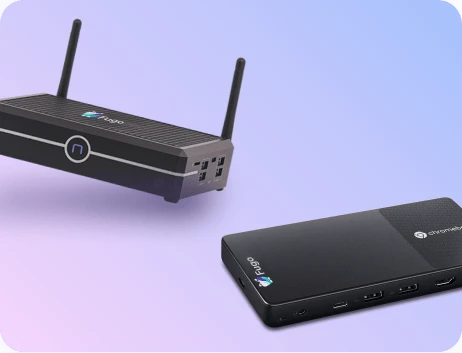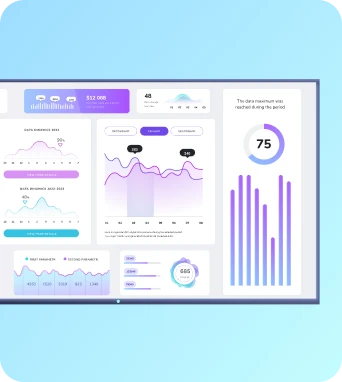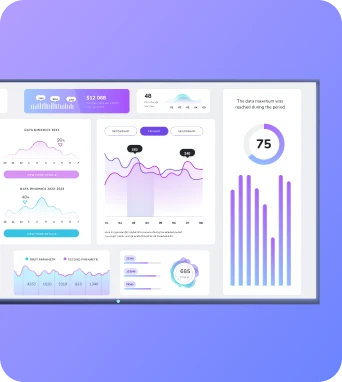The funny thing about writing trend pieces is that half the “predictions” are already sitting in front of us; they just haven’t tipped yet. You see them in small pilots at retail chains, in the odd request from a client RFP, or in the features software vendors quietly ship before anyone knows what to do with them.
That’s where digital signage is heading in 2026: less about wild speculation, more about connecting the dots between the experiments happening now and the practices that will be normal in a year.
So instead of sweeping forecasts, here are the shifts we’re already seeing on the ground - the ones that are set to define how teams actually use their screens next year.
1. Screens that react instead of repeat
For years, playlists have been the backbone of digital signage: you design content, schedule it, and let it loop. That model still works for campaigns and evergreen messaging - but more teams are asking for something different. They want screens that act less like billboards and more like live feeds.
In practice, that means real-time reactions. Sales teams want deals celebrated the instant they’re logged in HubSpot. Ops teams want the ability to push an alert the second a shipment is delayed. Floor managers want a single button they can hit when safety instructions need to override everything else.
Digital signage content triggers are the mechanism making this shift possible. Fugo's manual triggers already let you interrupt a loop with one click. Integrations with HubSpot — and soon Salesforce — fire content straight from the systems teams use every day.
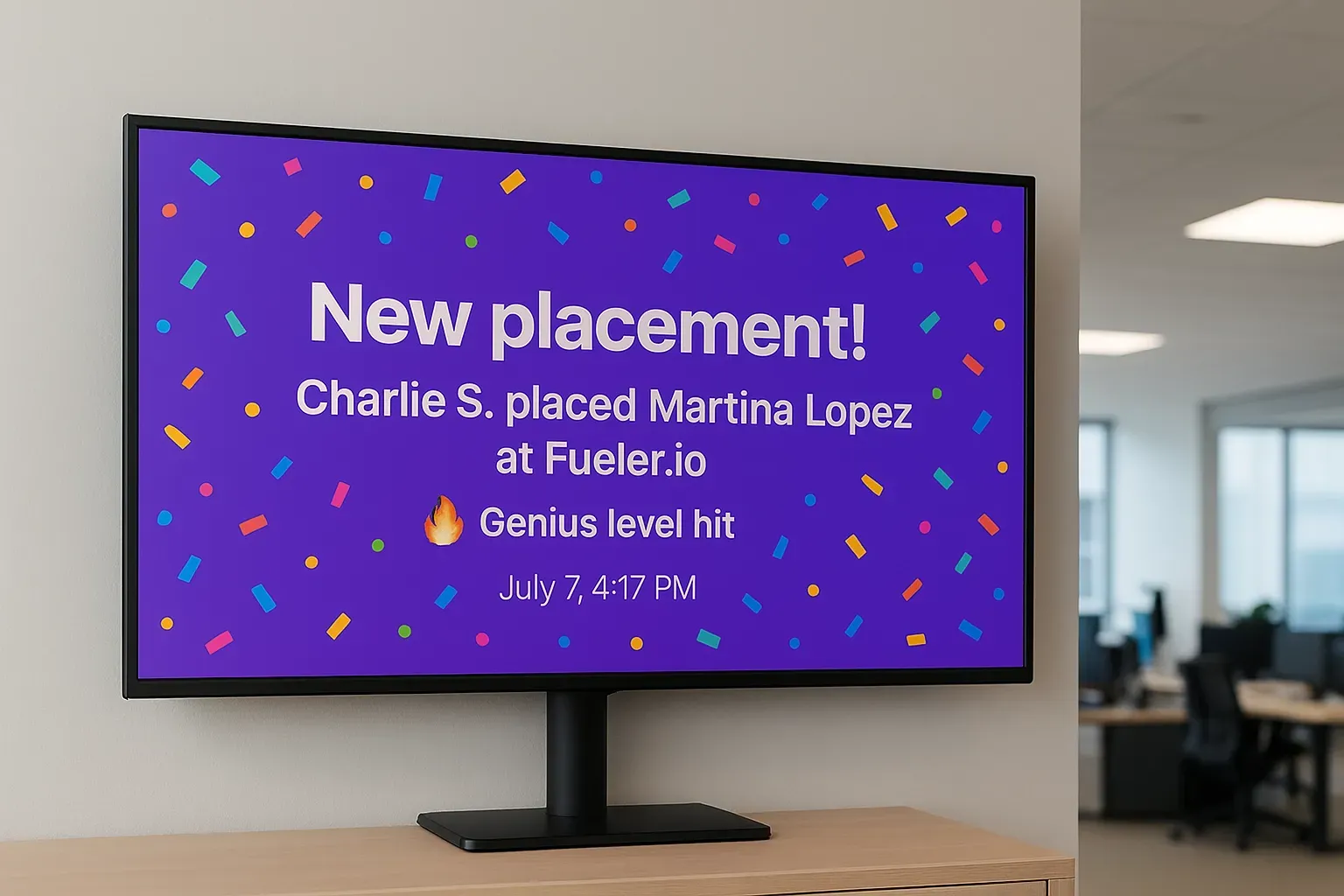
The trajectory is clear: playlists aren’t going away, but in 2026 they’ll be joined by triggers as a default expectation for how screens should behave.
2. Frontline workers go front & center
Considering frontline employees make up 80% of the world’s workforce, it’s surprising just how little attention they’ve received from digital signage (at least, until recently).
Using old-fashioned methods to communicate with frontline workers might result in missed emails and tone-deaf newsletters. Even if you think your methods are working, your employees may not agree — 65% of them feel like the communication they receive is ineffective.
This is why thousands of global businesses have turned (or will turn) to digital signage. The numbers don’t lie:
- 60% of banks use digital signage for customers or bank members
- 93% of manufacturing businesses use digital signage
- A whopping 100% of educational institutions use digital signage in general
These numbers will only continue to rise as new technologies pave the way to better frontline experiences, from TV dashboards and QR codes to scheduled content for different shifts.
3. Touchscreen kiosks keep hitting the big leagues
The touchscreen industry is projected to grow from $65.60 billion to a whopping $163.1 billion by 2030. In other words, it’s already a massive industry, and it’s only going to get bigger over time.
Case in point: digital kiosks. Touchless experiences might have been the hallmark of 2020, but in the age of AI, tactile is key. That’s why many growing businesses have implemented interactive touch tables, which create self-service opportunities for team members and customers.
Think touchscreen flows might be in your future? Learn more about possible use cases for interactive signage.
4. QR codes (still) can’t be killed
QR codes are nothing new, but they’ve managed to stay relevant long past their inception. Since their earliest history in 1994, they’ve been used on countless retail products, dinner menus, and of course, TV screens.
QR codes are seeing a renaissance of sorts — roughly 100 million US consumers will use them by 2026. They’re also getting an upgrade next year, which will hopefully make them even smaller and more compact.
Why does this matter to digital signage? Because the possibilities are endless! Whether you’re embedding a form on a TV screen or asking workers to complete an in-store survey, you can easily get the message across without taking up more than a margin of space.
5. Third-party integrations go first-class
In 2024, the average US business has 105 apps in its tech stack, representing millions of dollars of revenue. It also represents literally thousands of lines of data — so it’s no wonder why four in 10 businesses report uncontrollable data silos.
That’s one of the biggest reasons why third-party integrations are so critical. Considering 84% of organizations say integrations are their highest priority, it’s clear that connected tech stacks are the new norm for successful businesses.
This, of course, should include your digital signage program. Because how else are you supposed to handle it all on your own?
In 2026, digital signage platforms won’t just connect to file storage tools — they’ll be expected to wire directly into the systems brand and ops teams already live in.
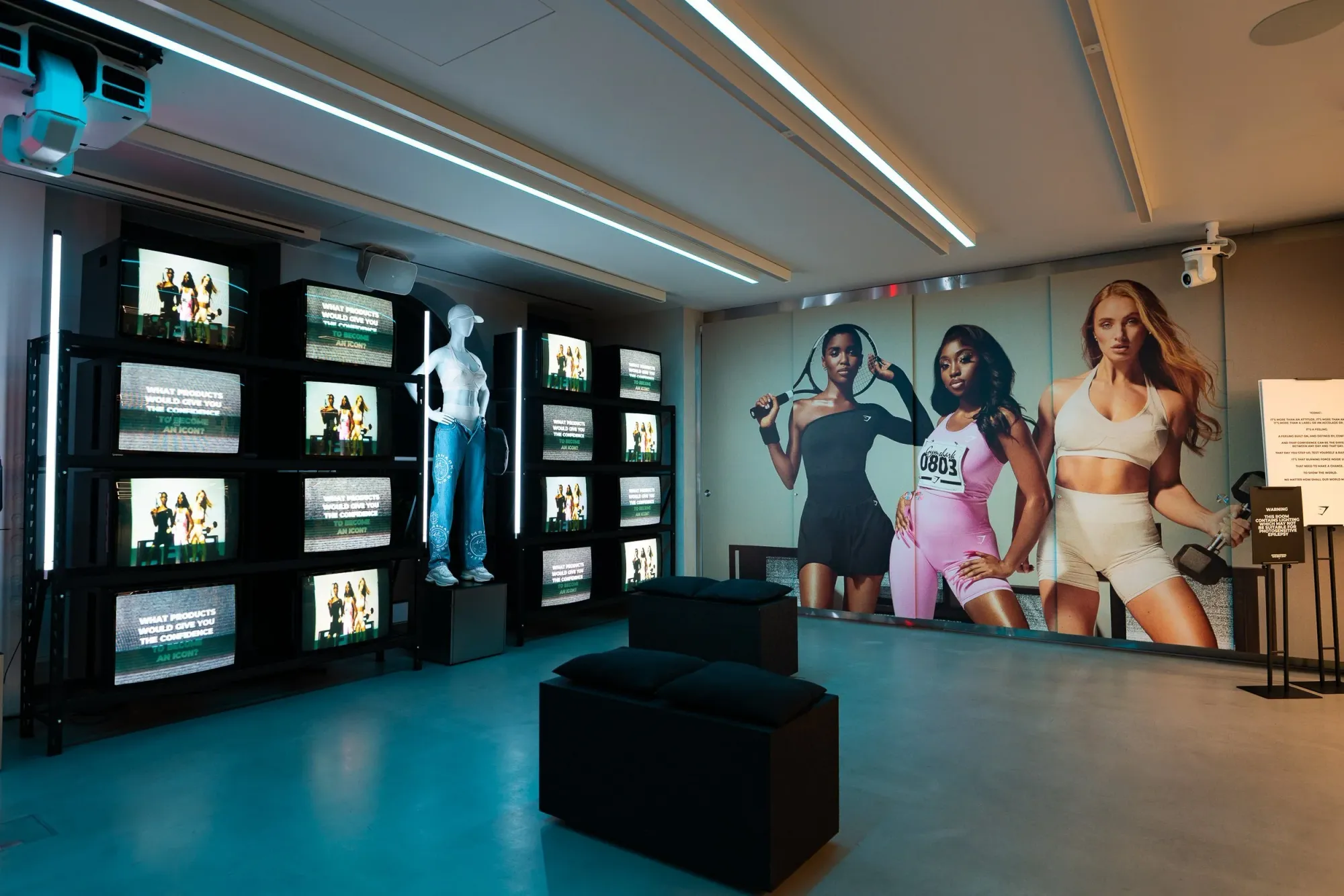
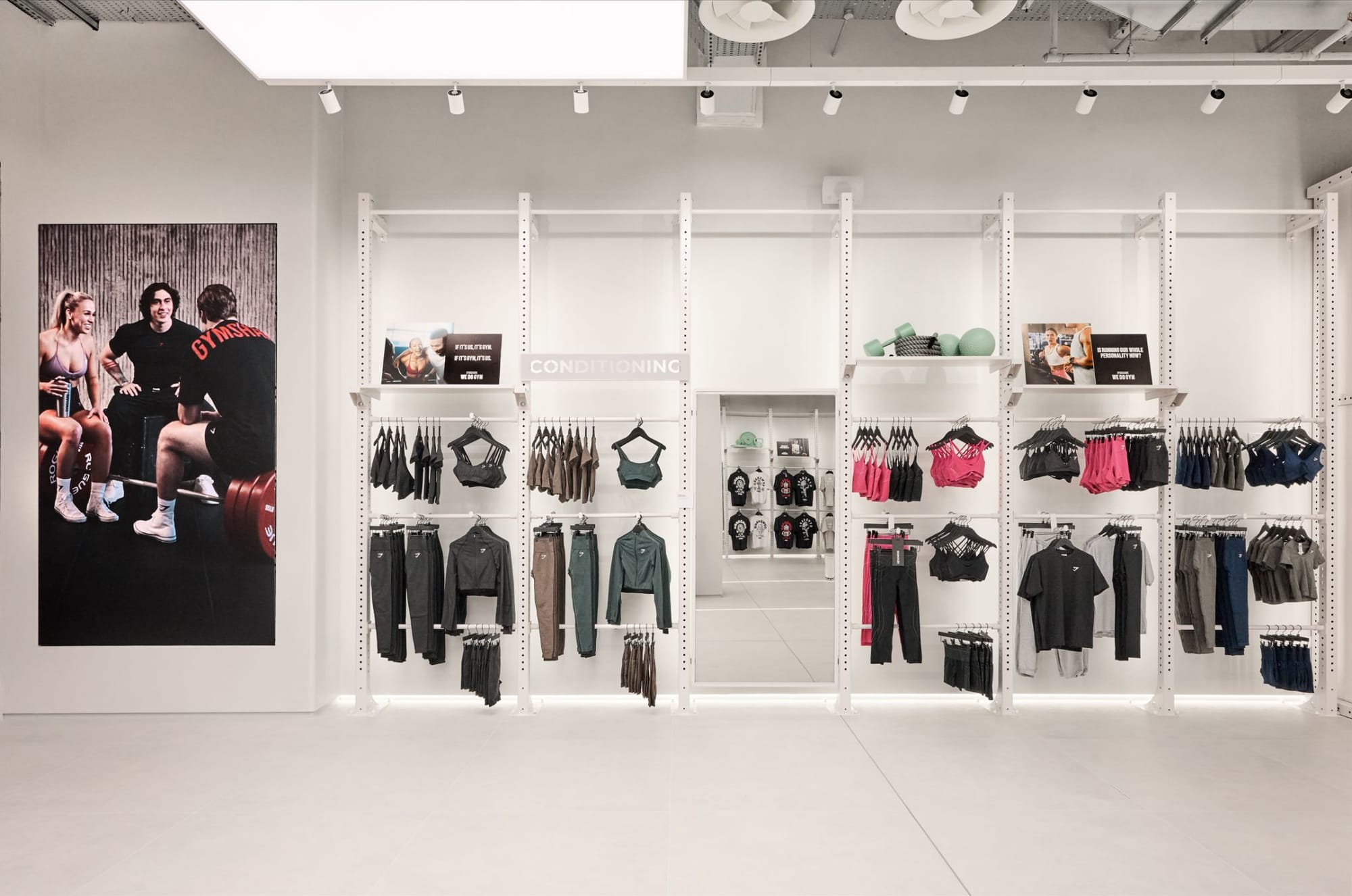
Read all about our big project with one of the worlds fasting growing online to physical fitnesswear retailers
One proof point: Fugo’s integration with Canto, rolled out across a major UK fitness retailer’s store network (yes, the one that probably shows up in your Instagram explore tab). The problem wasn’t a lack of content — it was the lag. Campaigns slowed down as soon as they hit the signage layer. By wiring their DAM directly into Fugo’s CMS, the brand’s content team now pushes updates to in-store screens from the same library that drives web and social. No more versioned exports, no IT handoffs, no waiting days for assets to catch up. For the first time, the screens move at the speed of retail.
And that’s just the start. The next wave of integrations is real-time — screens reacting to live business events instead of waiting for playlists to loop. That’s what digital signage content triggers make possible. Manual triggers already let managers push an urgent message across every screen instantly, while CRM connectors (HubSpot today, Salesforce soon) fire updates straight from the tools teams already use. By 2026, this won’t be a niche use case. Real-time signage will be part of the default playbook for how organizations expect their screens to behave.
Check out our guide to digital signage integrations.
6. Cloud technology gets more love
Everyone is headed to the cloud — and if you’re not there already, you’re getting left behind. A whopping 85% of businesses will be cloud-first in 2026, from productivity tools and finance channels to their digital signage platforms.
It’s not hard to see why cloud-based CMS programs are getting so much attention. With a platform like Fugo, for example, you can:
- Manage your content remotely (anywhere with a WiFi connection)
- Add or reduce screens depending on your needs
- Schedule and automate content at a glance
- Collaborate on content in real-time
- Run content on (almost) any screen
It goes without saying there will be a serious migration this year. If you haven’t already thought about heading to the cloud, now is a great time to consider your options.
💡 Related: Cloud Based vs On-Premise Digital Signage
7. AI tools are moving from buzzword to backbone
A year ago it was enough to say “AI is coming for digital signage.” By now, it’s clear the question isn’t if but how. We’ve already seen AI power template design, data-driven scheduling, and even purpose-built “AI signage players.”
The bigger shift in 2026 is screens that don’t just display content, but decide when to display it — based on what’s happening inside your business. That’s the idea behind Fugo’s AI beta program: treating screens as active interfaces that can listen for events, plug into your systems, and generate content the moment it’s needed.

Imagine a slide appearing the second a deal closes in Salesforce, an alert firing when Zendesk queues spike, or a leaderboard generated on the fly after a quick prompt. Those are no longer hypotheticals - they’re the kinds of workflows already being tested with real teams today.
👉 Want to help shape what AI can actually do for digital signage? Join our AI beta program to test new features and integrations, and work with us on building smarter, more responsive screens.
8. Innovation for digital signage players
We saw a lot of unique players hit the market last year, from the Raspberry Pi 5 to the Google TV Streamer. However, 2026 promises to be one of the biggest years yet.
Because AI-powered players are finally sliding into the spotlight.
We’re most excited about the Fugo Flash, which promises to be one of our biggest releases yet. This one-of-a-kind player will offer everything you need to marry digital signage with AI.
With Fugo Flash, you can:
- Use a simple mobile app to manage all your screen content in one place
- Integrate with dozens of apps, including Meta, Shopify, Zapier, and more
- Create playlists and organize content directly from your cellphone
- Instantly generate content with the help of AI (voice-activated, by the way!)
- Kick off with a 30-second setup process and plug-and-play USB system
Fugo Flash will be available for preorder in early 2026, so stay tuned for updates (or join the waiting list here).
So where's Fugo going in 2026?
Some of it’s still under wraps - but here’s what we can share.
- Triggers are expanding. Manual triggers are already live, HubSpot is in play, and Salesforce is next. More connectors will follow, shaped by the real-world requests we’re hearing from customers.
- The AI beta is underway. We’re working with early adopters to test how screens can react intelligently to business events, generate content on the fly, and plug into more of the tools teams already use.
- Integrations are deepening. This year we launched our Canto integration with a flagship retail rollout. In 2026, we’ll continue wiring screens directly into DAMs, CRMs, and other systems so signage keeps pace with the rest of the stack.
- Platform coverage keeps growing. Fugo is already running across a wide range of devices and OSes, and we’re continuing to expand support to meet teams where they are.
Curious to try what’s live today? Start with a 14-day free trial.Curious to try what Fugo’s got so far?
You sign up today with a 14-day free trial.
